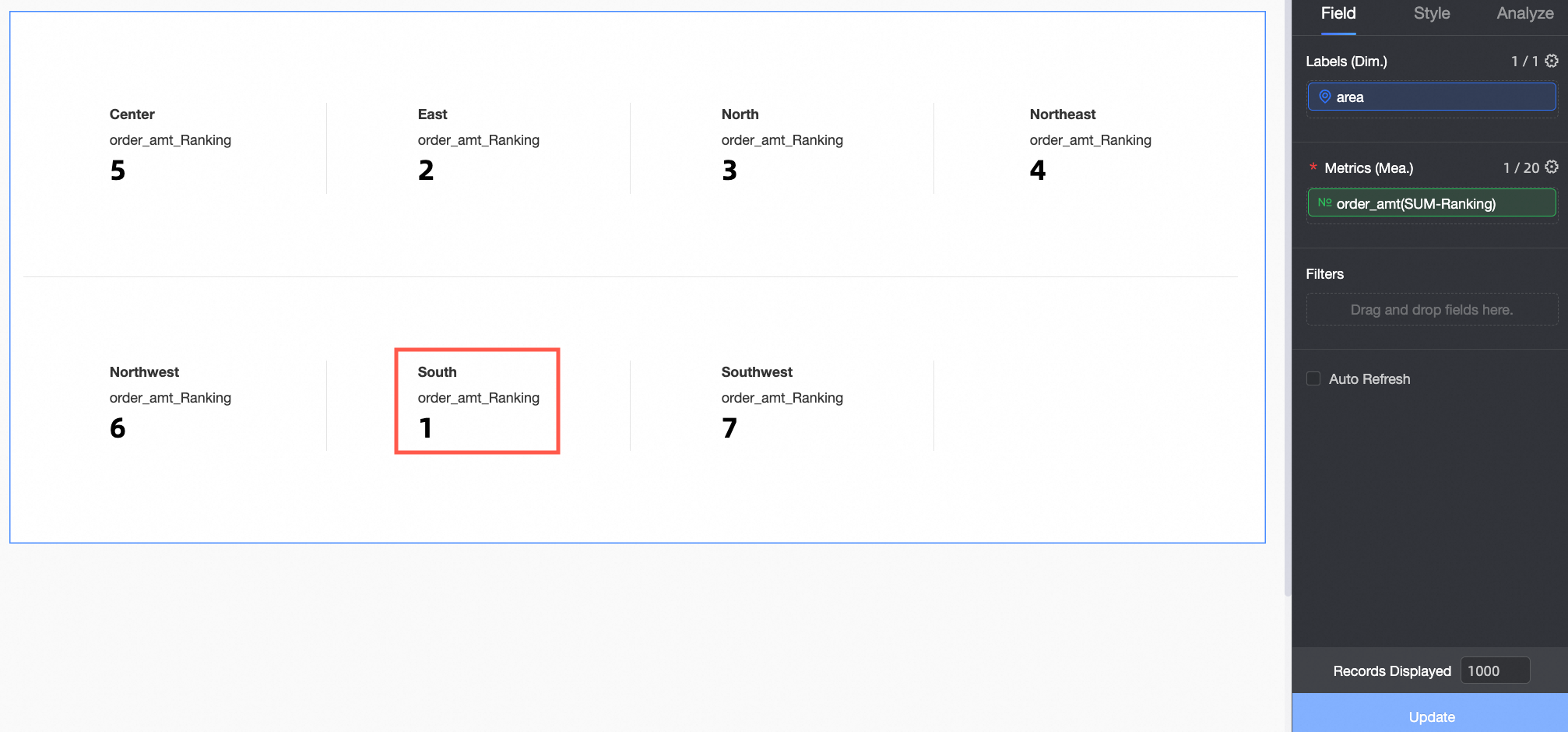Data ranking is used to rank the size of data, which is convenient for users to compare data sizes. When you analyze data, you can view the ranking of measures to make decisions. This topic describes how to configure a data ranking.
Prerequisites
A dashboard is created. For more information, see Create a dashboard.
A dataset is selected and chart fields are configured. For more information, see Configure a chart.
Limits
Charts that support data ranking are:
Line /surface chart: line chart, area chart chart, stacked area chart area chart, percentage stacked area chart, combination chart.
Bar charts: column chart, stacked column chart, 100% stacked column chart stacked column chart, circular bar chart, leaderboard, bar chart, stacked bar chart, 100% stacked bar chart stacked bar chart, dynamic bar chart, and waterfall chart.
Bubble /Scatter Chart: bubble chart, scatter chart, and facet scatter chart.
Table type charts: cross tables and details tables.
Pie /ring charts: pie charts, polar area chart charts, radar charts, and rectangle hierarchy chart.
Geography charts: colored map, geo bubble chart, heat map, flying line map, and symbol map.
Indicator charts: kanban and indicator trend charts.
Funnel /conversion relationship charts: funnel chart and comparison funnel chart.
Other charts: word cloud.
Currently, only cross tables support in-group ranking.
This analysis method is calculated based on the returned result set. Currently, the upper limit of the public cloud is 10000. If the total amount of data returned exceeds 10000, the calculation result may not meet expectations. Please pay attention!
Example 1: rank data in a cross table
After you log on to the Quick BI console.
Log on to the Quick BI console. In the top navigation bar, click Workspace. In the left-side navigation pane, click Dashboards. On the Dashboards page, click All Items, find the dashboard that you want to manage and click the dashboard name to go to the dashboard editing page.
In this example, a professional group workspace is used.
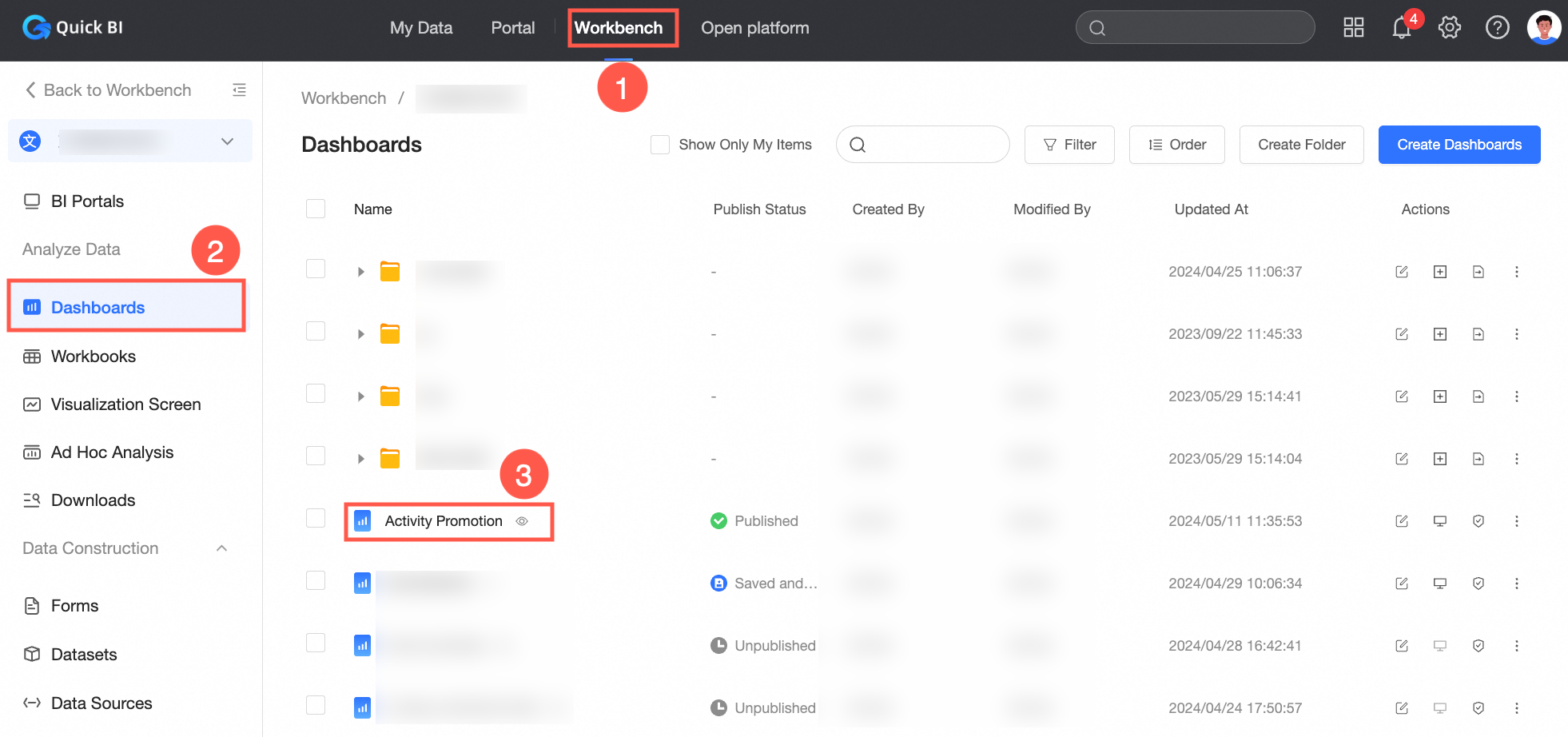
In the top navigation bar, click Add Chart, find the
 icon, and then click or drag the cross table to the dashboard section.
icon, and then click or drag the cross table to the dashboard section. 
On the Fields tab of the Data panel, configure the cross table.
The target dataset is company_sales_record.
In the Measures list and Dimensions list, find the required fields and double-click or drag them to specific fields.
In the Dimensions list, double-click area and province. You can also drag them to the Rows field.
In the Measures list, double-click or drag order_amt to Columns.
Click Update.
The system automatically creates a cross table, as shown in the following figure.
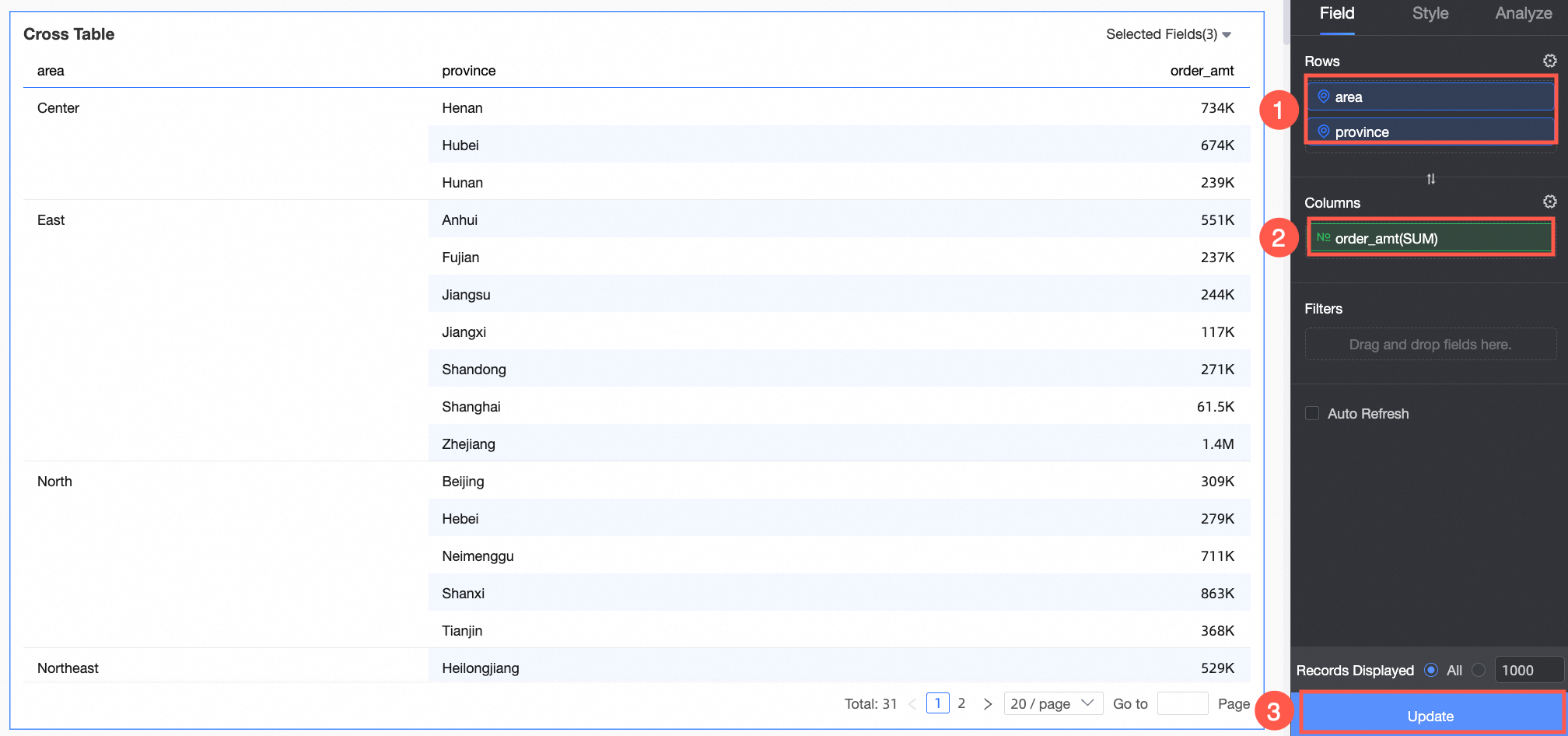
Click the Fields tab. In the Measures section, find Order Amt and double-click it. You can also drag it to the Columns section.
Find the second order amount in the Column section, click the
 icon on the right, and choose Advanced Calculation> Rank. Follow the steps shown in the following figure to enter the ranking settings.
icon on the right, and choose Advanced Calculation> Rank. Follow the steps shown in the following figure to enter the ranking settings. 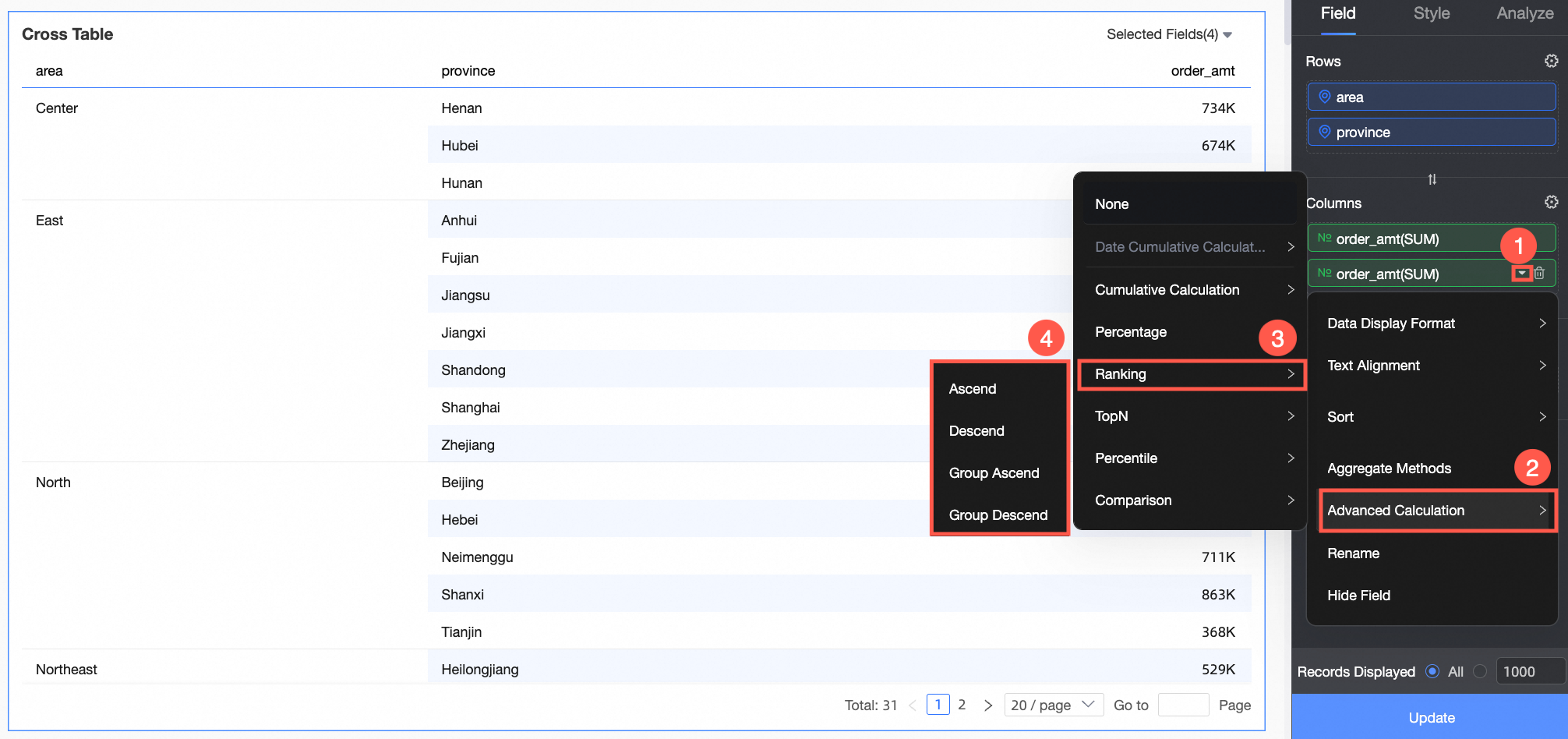
You can select Ascending, Descending, Within-Group Ascending, and Within-Group Descending.
Click Update.
The following figure shows an example of value ranking for the order_amt field.
If you set Order Amount to Ascending, the order with the largest order amount is ranked last. In this example, the order with the largest order amount in Guangdong is ranked No.31.

If you select Order Amount, the order with the largest order amount is ranked first. In this example, the order with the largest order amount in Guangdong is ranked No.1.
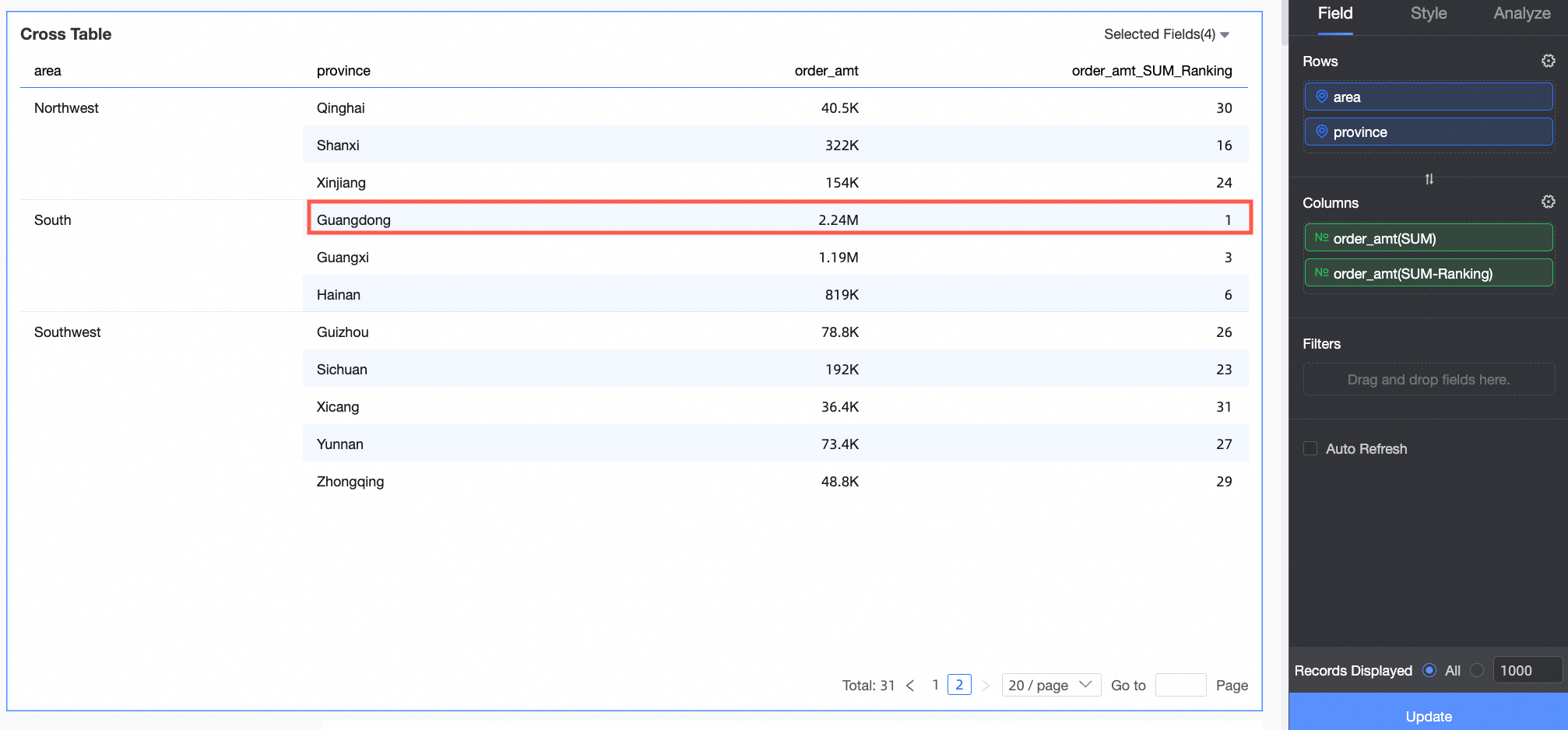
If you select Ascending Order for Order Amount, the order with the largest order amount in each group is ranked last. In this example, the order amount in the China (East) region of Zhejiang is the largest and ranked as No.7.
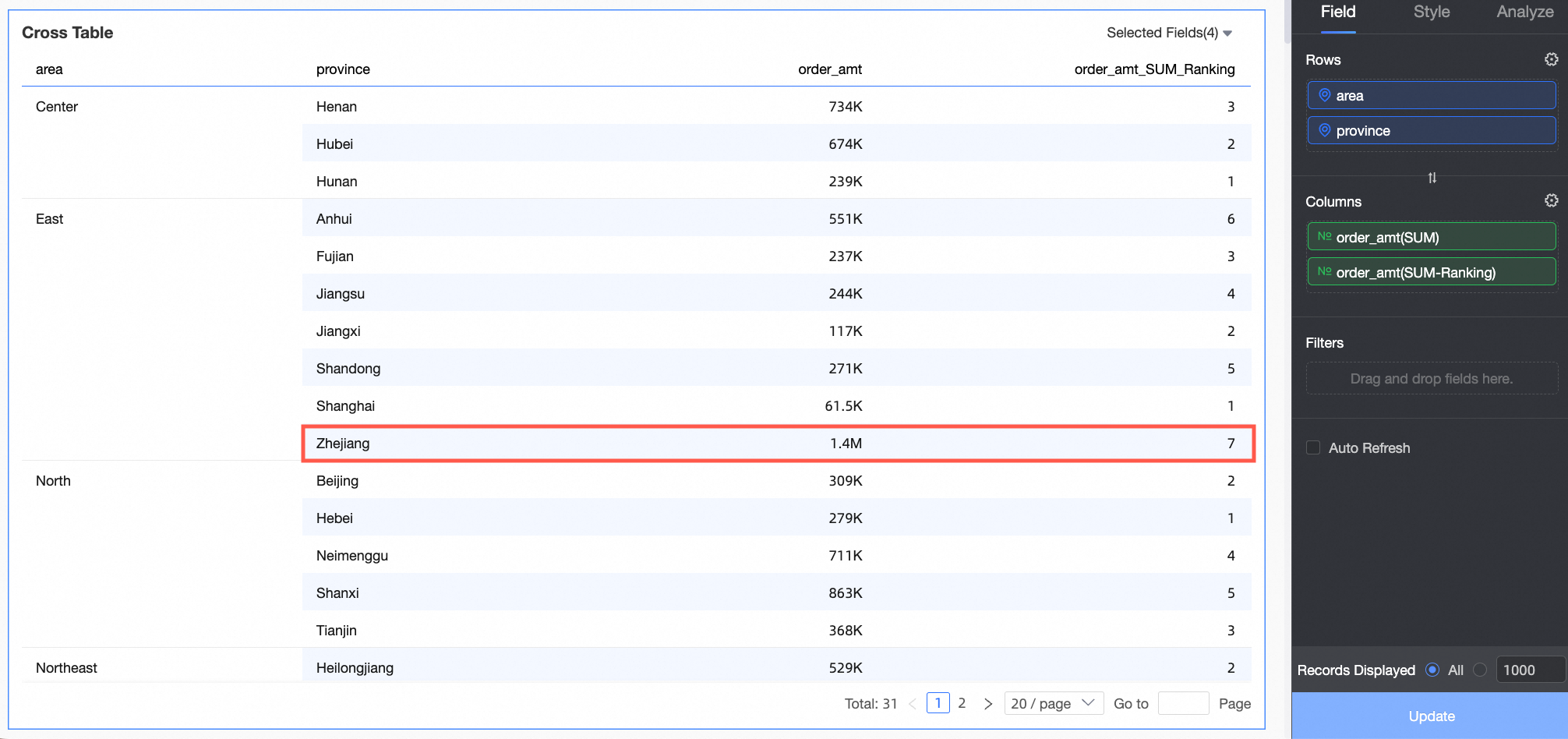
If you select Order Amount, the order with the largest amount in each group is ranked first. In this example, the order with the largest amount in the East China region is ranked No.1.
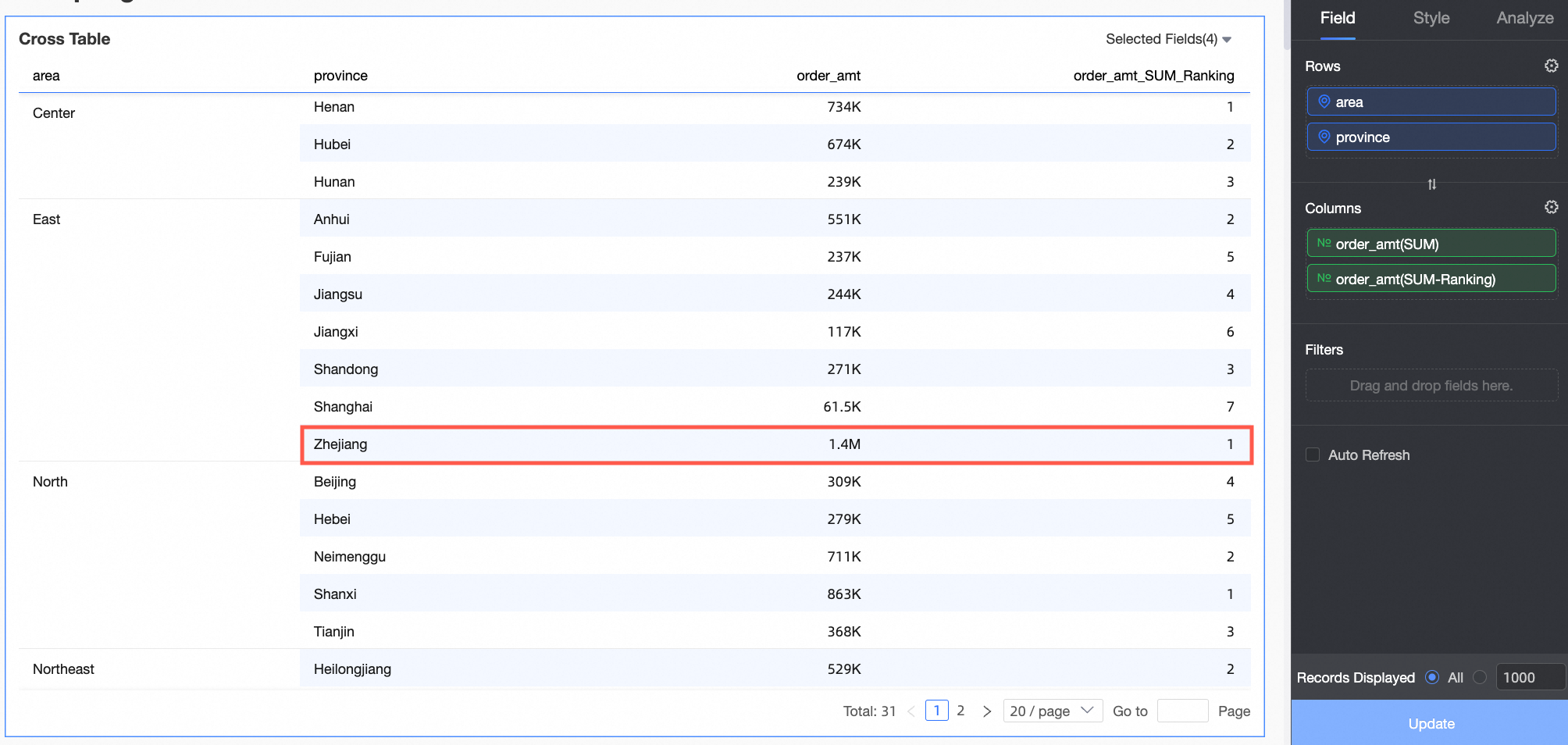
Example 2: Set ranking in other visualizations
Take, for example, the ranking of kanban.
After you log on to the Quick BI console.
Log on to the Quick BI console. In the top navigation bar, click Workspace. In the left-side navigation pane, click Dashboards. On the Dashboards page, click All Items, find the dashboard that you want to manage and click the dashboard name to go to the dashboard editing page.

In the top navigation bar, click Add Chart, find the kanban, and then click or drag the kanban to the Dashboard section.
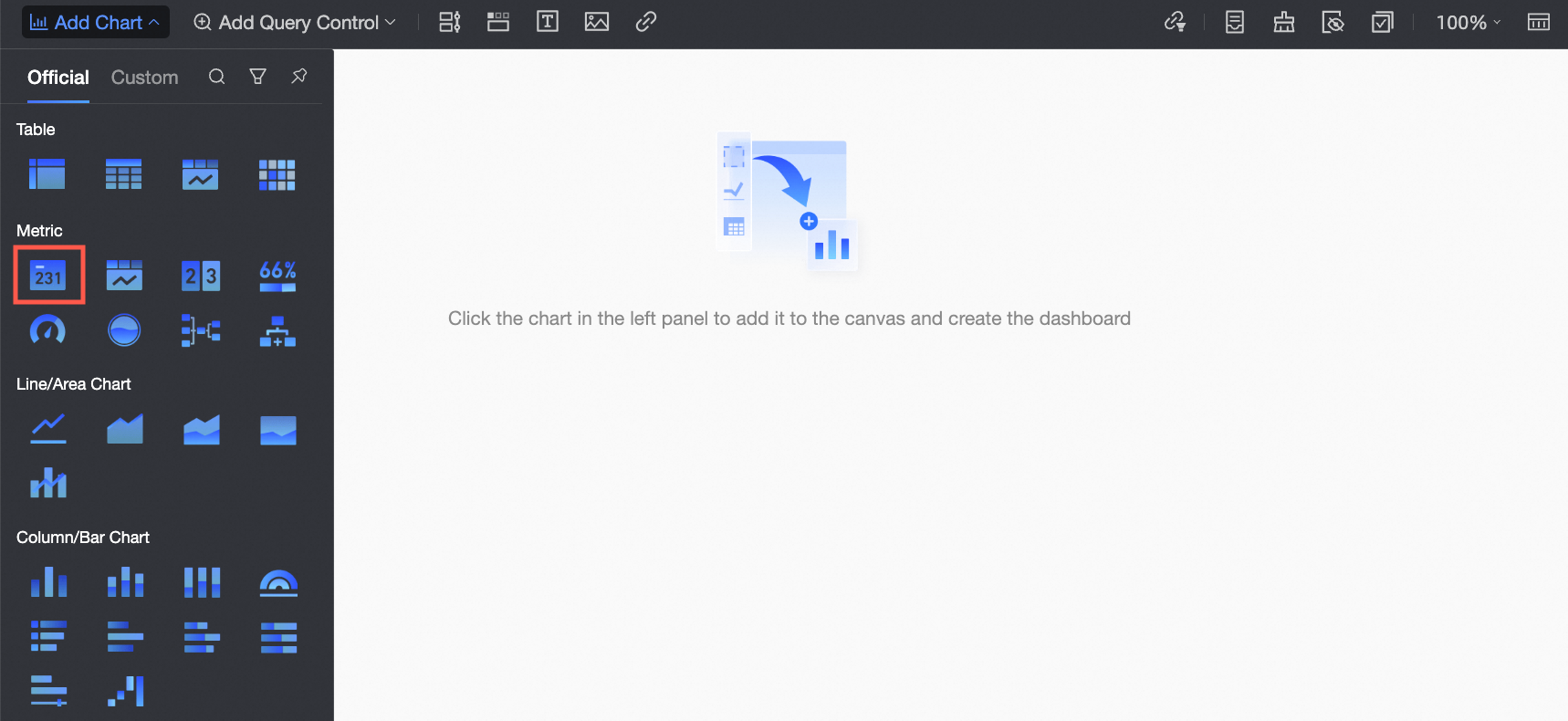
On the Fields tab of the Data panel, configure the kanban data.
The target dataset is company_sales_record.
In the Measures list and Dimensions list, find the required fields and double-click or drag them to specific fields.
In the Dimensions list, double-click Area. You can also drag this dimension to Rows.
In the Measures list, double-click or drag order_amt to Columns.
Click Update.
The system automatically creates a kanban, as shown in the following figure.
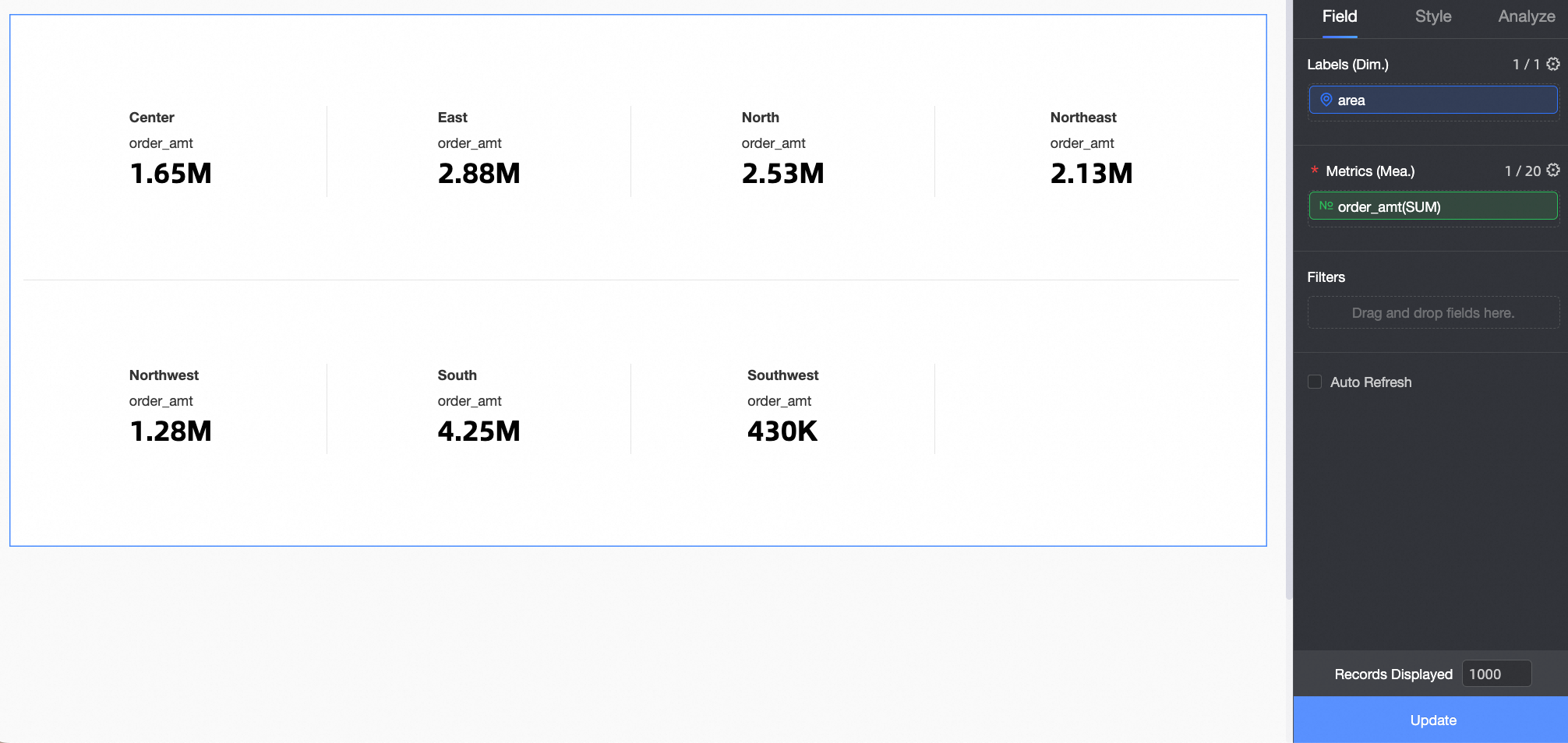
Click the
 icon next to Order Amount and choose Advanced Computing > Rank. Follow the steps shown in the following figure to enter the ranking settings.
icon next to Order Amount and choose Advanced Computing > Rank. Follow the steps shown in the following figure to enter the ranking settings. 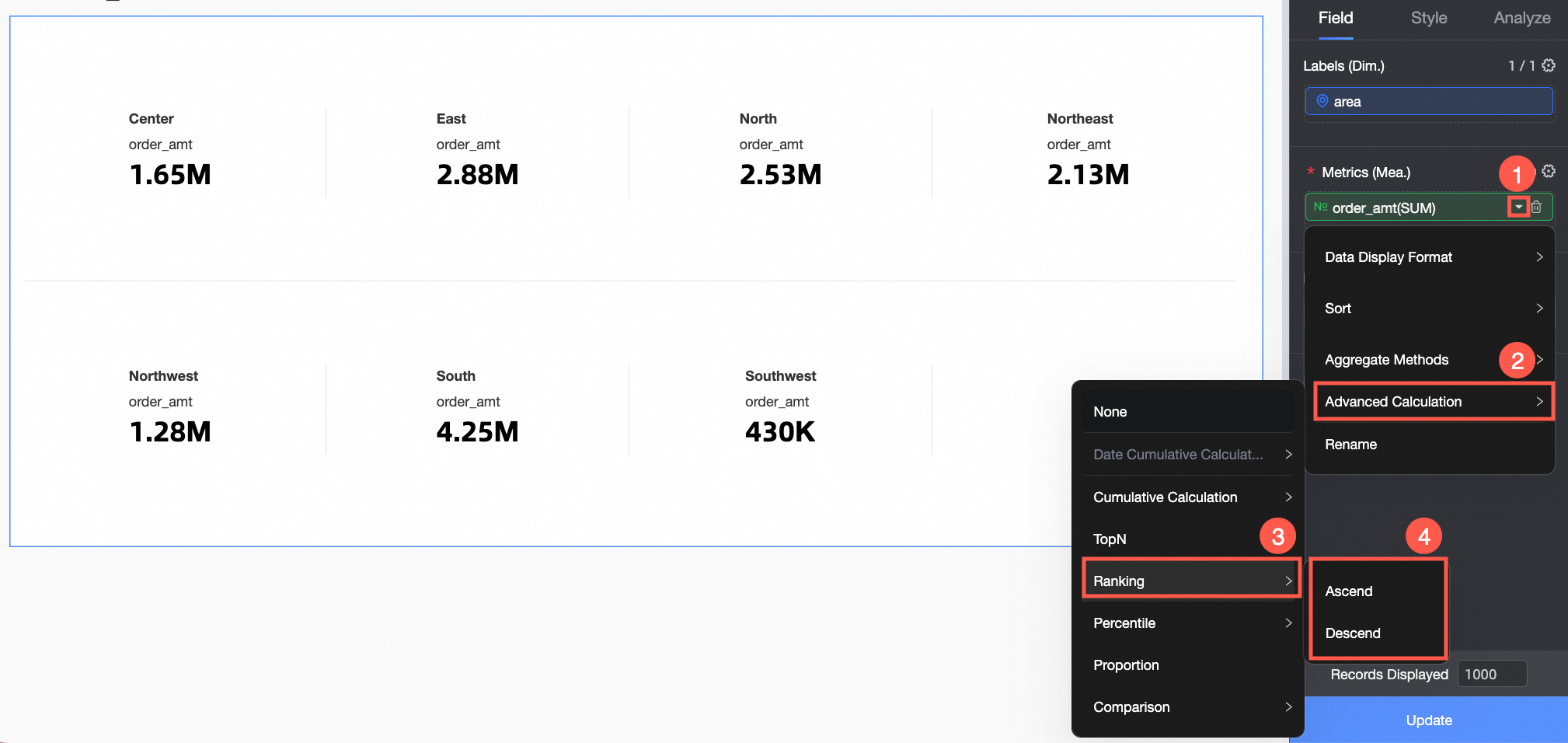
You can view the chart in ascending or descending order.
Click Update.
The following figure shows the kanban order amount ranking.
If you select Ascending Order for Order Amount, the order with the largest order amount is ranked last. In this example, the order with the largest order amount in the South China region is ranked No.7.
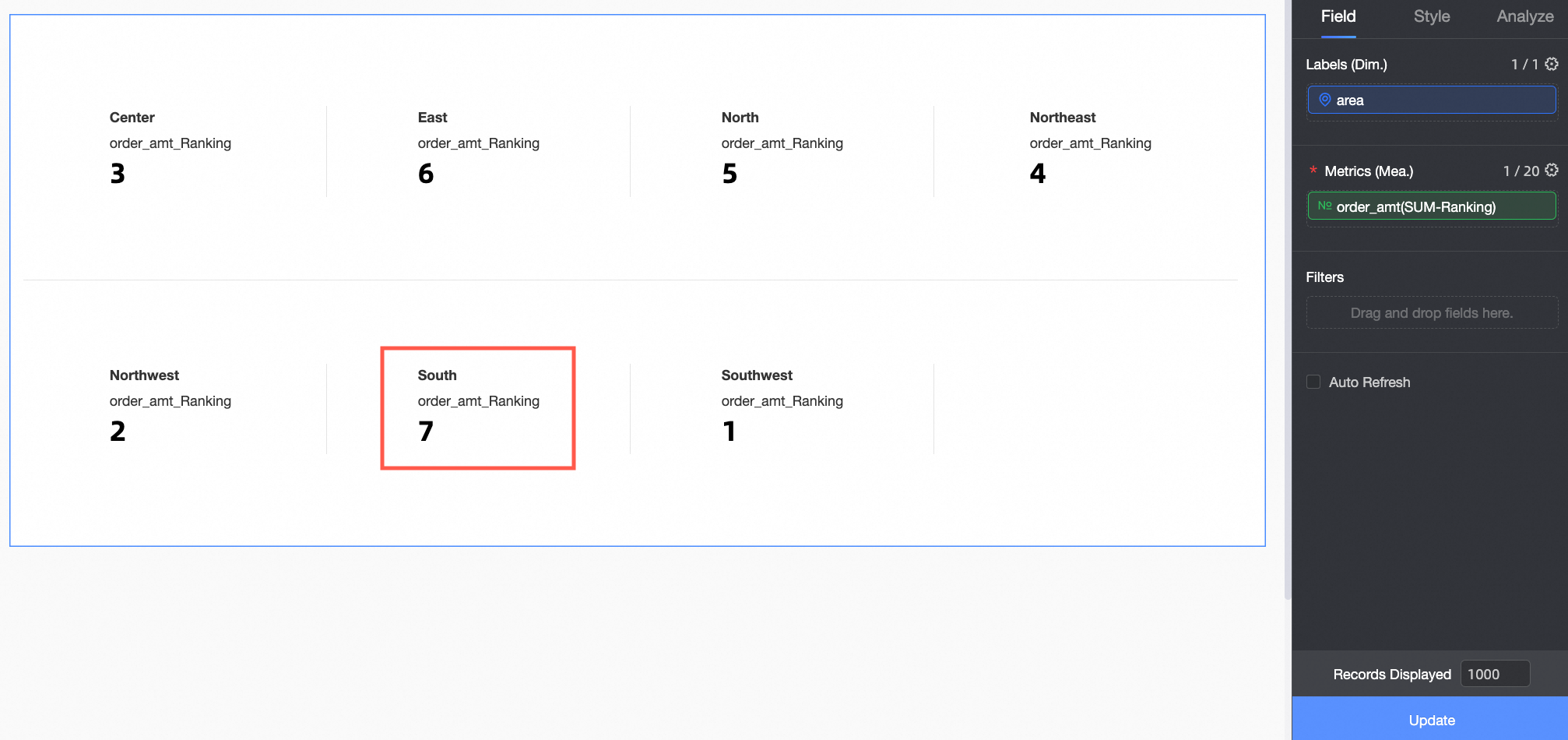
If you select Order Amount, the order with the largest order amount is ranked first. In this example, the order with the largest order amount in the South China region is ranked No.1.
